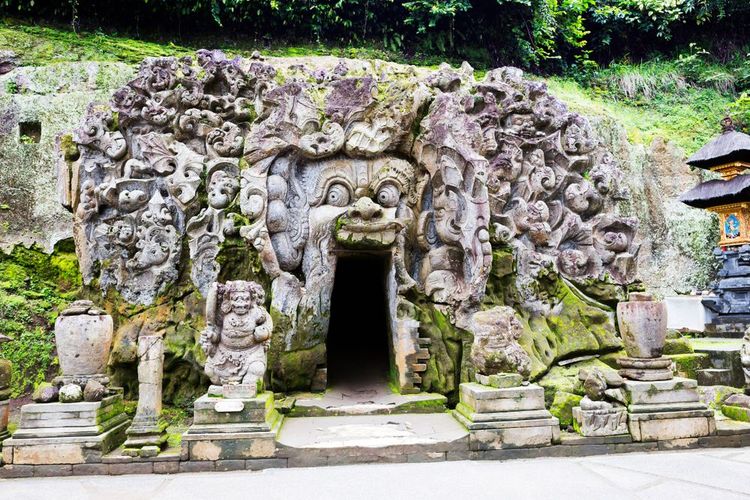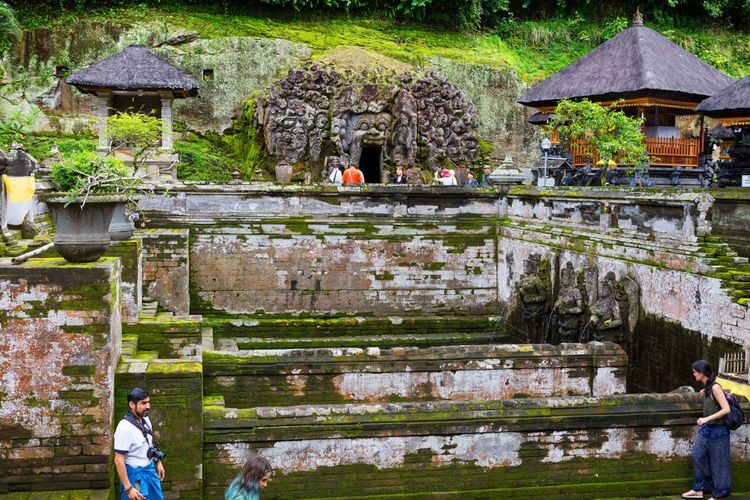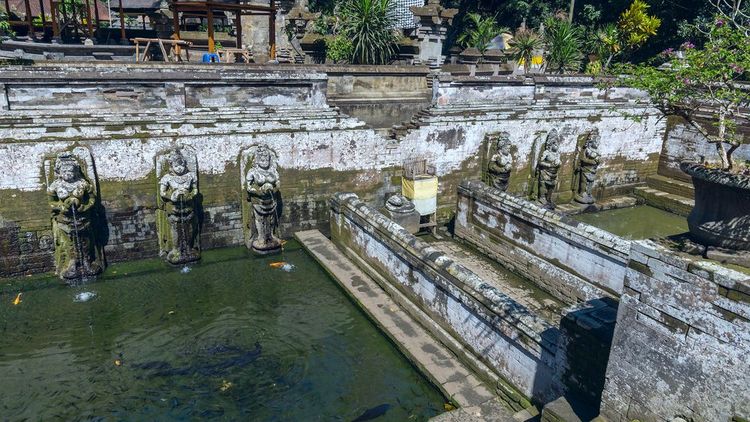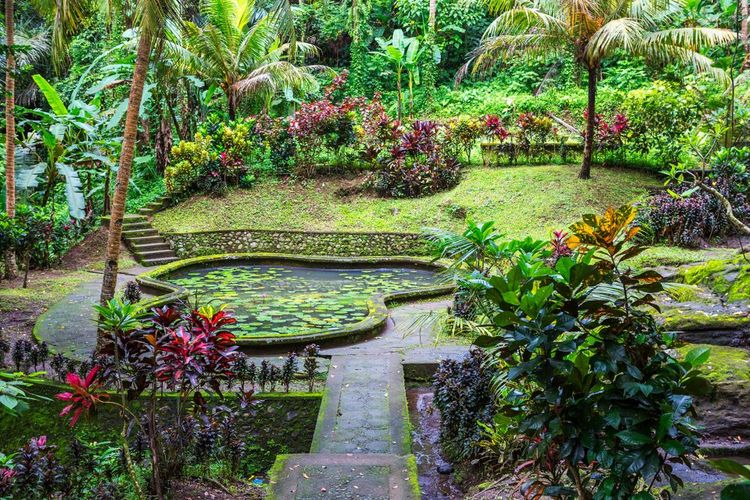The origins of the Goa Gajah cave are unknown. Local legend has it that a giant called Kebo Iwo dug the cave with his fingernails during the night. It is also said that this place was once a refuge for a Buddhist monk. The cave is also mentioned in the Javanese poem Nagarakertagama. Although the word temple is used to describe it, there is no building dedicated to worship. Goa Gajah is best known for its famous cave, the entrance to which is protected by a demon's head carved into the rock. Locals claim that this scary figure called 'Boma' is there to deter evil spirits from entering the site, not to frighten visitors and worshippers.
The Elephant Cave is a religious sanctuary located to the west of the village of Beduluh, about 4 km from the town of Ubud. It is dedicated to the deity Ganesh, the god of wisdom in Indian Hinduism. Listed as a UNESCO World Heritage Site since 1995, the sanctuary dates back to the 9th century and is unique in that it is both a Hindu and Buddhist shrine. This is because the remains of a Buddha were found in a courtyard adjoining the temple.
The main difference lies in the fact that Buddhism refers to a spiritual leader: the Dalai Lama. To understand the religious cults practised in Bali, and to get away from it all, we strongly recommend a visit to this temple! You'll long remember walking through its entrance, symbolised by a "demon " with its mouth wide open and seemingly swallowing you.


The course of the visit
The visit is relatively short, lasting 15 minutes. After entering the cavern, you will wander along a long corridor of around 13 m, which leads to a small altar on which you will find three "lingams", phallic stones that symbolise fertility. These in particular represent the Hindu trinity of Shiva, Brahma and Vishnu. On the other side, you will see an alcove in which stands a statue of Ganesh, the divinity of wisdom, education, intelligence and prudence. Many offerings are made here by devotees.

Once you've left the cave, don't miss the surrounding pools and fountains. After descending a number of steps, you'll come to the Patirtaan pool. It is adorned by two statues of women holding basins from which a stream of water spurts out, believed to be sacred. This water is said to have the power to give eternal youth! The Balinese (and foreigners too, for that matter) often take the opportunity to splash it on their faces.
✈️ Fly to Bali!
Compare prices and book your plane ticket to Bali!Practical information
Don't forget that, as in many places of worship, proper dress is required. As with any visit to a temple in Bali, a sarong must be worn if you are wearing shorts or if your arms are bare. They can be hired at the temple entrance.
💰 There is a charge to enter the temple. It costs 15,000 rp for adults and 7,500 rp for children, or around €0.85 and €0.40 respectively.
🗓️ It is open every day from 8am to 5pm. The best time to visit is in the morning, when it will be cooler. The site will also be more peaceful, as tourists mainly come in the afternoon.






